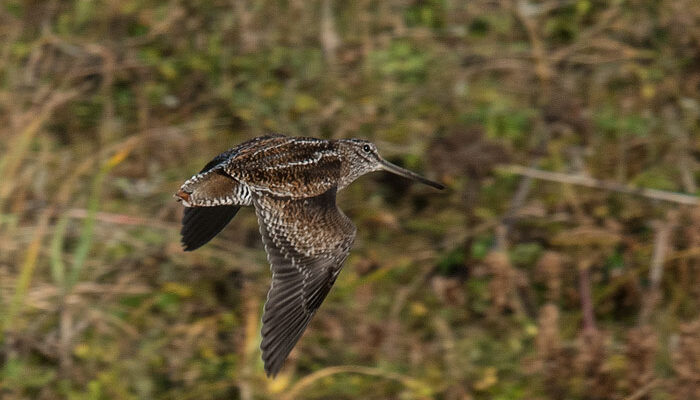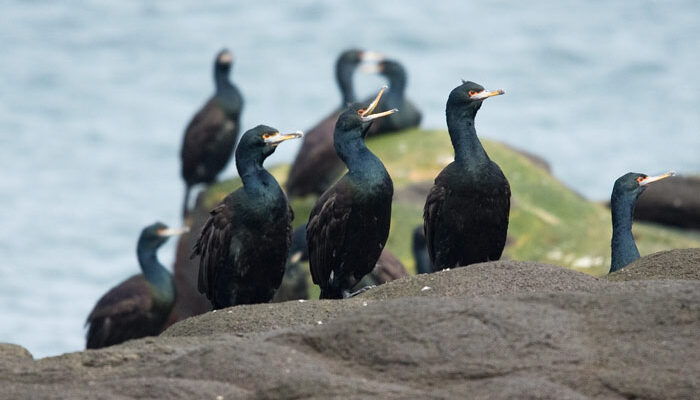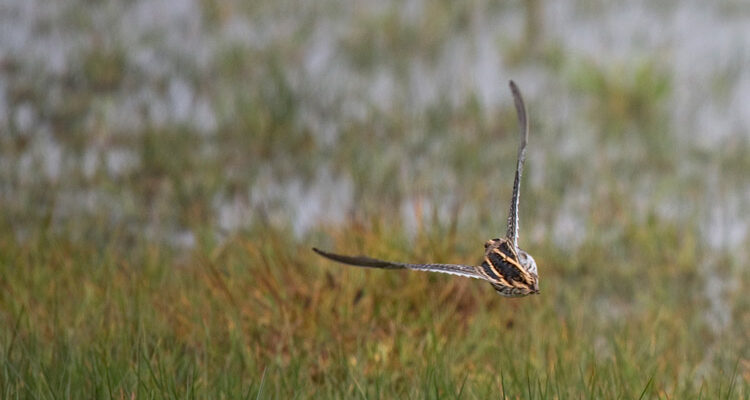A Report on Our Fall Tour to the Pribilofs, September 25-30, 2016 (with unintended extension until…

The Pribilofs: A Week of Rarities!
The highlight of our 2018 fall tour St. Paul Island was this stunning Solitary Snipe, only the third ever recorded in North America! Photo Aaron Lang.
An Account of Our Recent Fall Tour to St. Paul Island, 21-26 September 2018.
The Pribilofs are an isolated group of islands in the southern Bering Sea, home to a unique collection of breeding and migrant species. Owing to its isolated geography, St. Paul Island has hosted a number of incredible rarities which drop in during spring and fall migration and our late September tour to St. Paul Island is specifically focused on searching for these rarites. Successful rarity hunting has a lot do with weather, luck, and effort. We always put in the effort, and sometimes weather patterns and luck lend their hand as well. This year, all of these factors conspired in our favor delivering an incredible list of rare birds to the island during our six-day stay.
Prior to our arrival, the winds had been out of the west and south-west for many days, the preferred directions during migrations for us birders hoping for birds from Asia. We arrived on the island to clear conditions and strong 30 miles per hour wind out of the south-west. Several rarities had been found just prior to our arrival so our small group of seven plus me was eager to hit the ground running. We wasted little time in relocating a GRAY-STREAKED FLYCATCHER on our first night on the island! That night the winds switched to due west and built overnight. By the morning of day two, the winds were gusting to 40 miles per hour out of the west. These were great winds for bringing in birds, but difficult conditions to bird in. It was difficult to hold binoculars steady! We did what we could in the wind on day two and managed to find a GRAY-TAILED TATTLER, SLATY-BACKED GULL, and got excellent looks at the island’s most famous species, RED-LEGGED KITTIWAKE.
By the morning of day three, the winds had diminished significantly but were still out of the west, win-win. On a drive to Marunich, on the north side of the island, Alex Harper, one of our great local guides, spotted a raptor soaring near the road. It was a WHITE-TAILED EAGLE! This bird has been on the island since spring of 2017 but is only seen sporadically and days or weeks pass between observations and we were very fortunate to see it during our trip. It stayed in view just long enough for scope views and a few pictures. At Marunich, we found two EURASIAN SKYLARKS, another GRAY-TAILED TATTLER, and had excellent views of a flock of roosting RED-FACED CORMORANTS. It was a great day that only got better. Just before dinner, we met up with Sulli Gibson and Nicole Koeltzow to check a patch of wild celery on the leeward side of Black Diamond Hill, just outside town. As we were arriving, Sulli and Nicole turned the excitement knob to 11 by flushing a large snipe that was clearly different from a Wilson’s or Common Snipe. We were able to relocate it and on its second flight, we all got a look at a snipe that none of us were familiar with. Fortunately, my camera also locked on and captured several photos that proved the bird to be a SOLITARY SNIPE, only the third North American record!
By the afternoon of day three, the winds dropped significantly and remained light for the rest of the tour. Skies remained clear to mostly clear and except for one brief afternoon shower rain was not a part of our experience for this trip. The weather was perfect for Asian birds and for birders.
In the early morning on day four, a trip to the northeast point of the island produced a TUFTED DUCK and three BRAMBLINGS, kind of a nice little Saturday. Our plan for the late morning was to return to Black Diamond Hill with two objectives: to see if the Solitary Snipe was still around and if so, to get better looks. Check. And check! The light was perfect and this time we were prepared. When the snipe flushed from the same patch of celery there was much celebration and a several good photos taken of this distinctive bird. Could the trip get any better?
Our fifth day began with a seawatch at Southwest Point. A few NORTHERN FULMARS showed well of the point, a few RED-LEGGED KITTIWAKES passed by, and a gorgeous EMPEROR GOOSE flew in and landed on the rocky beach right in front of us where it stayed for the duration of our seawatch. During our vigil on the beach, we also briefly glimpsed a GYRFALCON as it zipped behind us and a PEREGRINE FALCON banking overhead and stooping on a GRAY-CROWNED ROSY-FINCH right in front of us. After lunch, we returned to the northeast end of the island where we picked up a YELLOW-BILLED LOON and another and much improved, view of the GYRFALCON. As soon we got back into cell service, we received word from Nicole that she had a hot bird in the crab pots and we raced over there to find a RED-FLANKED BLUETAIL just before dinner! Our initial views were brief, but after dinner, we relocated the bird in the dunes behind the crab pots where we watched the bird as it sat nearly motionless in the sun for 15 minutes. Unreal.
It had been a great trip, the most rarity-charged trip to the Pribilofs that I have ever been a part of, spring or fall, in 18 years of tours to the island. What more could we see on our last morning? For our final outing, we decided to return to the productive northeast end of the island. Two BRAMBLINGS were still there, two EURASIAN SKYLARKS flew overhead, and the morning light was beautiful. As we began to head back toward town, we stopped briefly to open the gate near Webster Lake. It was here that luck played its final card. While we waited briefly for the gate to open, Paul and I glimpsed a small bird literally drop from the sky and land next to the van. I raised my binoculars and sitting in the wild celery, staring back at me with its beady little eye, was a COMMON ROSEFINCH.
Six days, seven wonderful birders, ten Asian species, and a great mix of other rare and hard to find birds. I won’t forget this trip for a very long time and can hardly wait to return to the Pribilofs next year!

